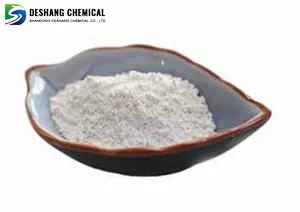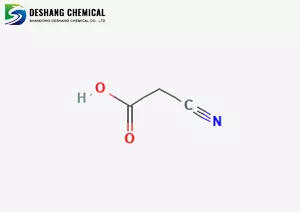All Categories



Cyanoacetic acid CAS 372-09-8, Cyanoacetic acid, CAS 372-09-8
Molecular formula: C₃H₃NO₂ (NCCH₂COOH),Molecular weight: 85.06,Appearance: White crystals or powder, with strong hygroscopicity. It may turn slightly yellow after long-term storage.
CAS : 372-09-8
Formula : C3H3NO2
Mol. wt. : 85.06
EINECS : 206-743-9
| CAS | 372-09-8 |
| Molecular formula | C3H3NO2 |
| Molecular weight | 85.06 |
| EIENCS | 206-743-9 |
| Form | Adhering Crystalline Solid |
| Melting point | 65°C |
| boling point | 108°C0.15 mm Hg |
| Density | 1.3676 |
| Solubility | H2O: soluble50mg/mL, clear, colorless to very faintly yellow |
| PKA | 2.45(at 25℃) |
| Color | White to light beige |
| Storage temp | Store below +30°C. |
Molecules and Structures
Molecular formula: C₃H₃NO₂ (NCCH₂COOH)
Molecular weight: 85.06
Appearance: White crystals or powder, with strong hygroscopicity. It may turn slightly yellow after long-term storage.
Melting and boiling points
Melting point: 65-68℃
Boiling point: 108℃ (under 2.0kPa pressure reduction).
Solubility
Readily soluble in water (263 g/L, 20℃), ethanol and ether;
Slightly soluble in benzene, chloroform and acetic acid.
Chemical properties
Acidity: pKa≈2.45, which is more acidic than common carboxylic acids (due to the electron-withdrawing effect of the cyanogenic group).
Stability
Decomposition at 160℃ → acetonitrile (highly toxic) + CO₂;
It releases hydrogen cyanide (HCN) when exposed to strong acids.
Reactivity
It participates in reactions such as esterification (to form cyanoacetate) and Knoevenagel condensation (to synthesize α,β -unsaturated nitriles).
Pharmaceutical synthesis
Key intermediate
Vitamin B₆ caffeine barbiturate sedatives;
Medical adhesive (methyl α -cyanoacrylate).
Anti-cancer drugs: synthetic sulin acid, etc.
Pesticide industry
Fungicide: thiamine cyanide (for controlling oomycetes disease)
Herbicides: Precursors for synthetic sulfonylurea herbicides.
Chemical Engineering and Materials
Resin modification: Enhancing heat resistance (such as hindered amine light stabilizers);
Dye synthesis: C.I. basic Yellow 90/96 and other azo dyes;
Metal treatment: Surface degreaser.
Toxicity data
Acute toxicity: Oral LD₅₀=400-800 mg/kg in guinea pigs; Oral LD₅₀=1500 mg/kg in rats;
Irritation: Skin corrosion, eye damage.
Hazardous characteristics
Corrosiveness: Burns upon contact with skin, releases HCN (highly toxic) upon contact with acid;
Explosion risk: Flammable (flash point 107℃), dust can explode.
Protection and Emergency Response
Operating equipment: Gas mask (full face mask), nitrile gloves, anti-corrosion suit;
Leakage treatment: Sand and soil adsorption → hazardous waste incineration (water flushing is prohibited)
Storage conditions: Sealed and protected from light, ≤30℃; Stay away from acids/oxidants.
Transport marking
UN 3261 (Class 8 corrosives, Class II packaging)
* Prompt reply and 24 hours online, professional team to provide best price and high quality product.
* Sample testing support.
* Every batch of products will be tested to ensureits quality.
*The packing also can be according the customers` requirment.
*Any inquiries will be replied within 24 hours.
*we provide Commerical Invoice, Packing List, Bill of loading, COA , Health certificate and Origin certificate. If your markets have any special requirements, let us know.